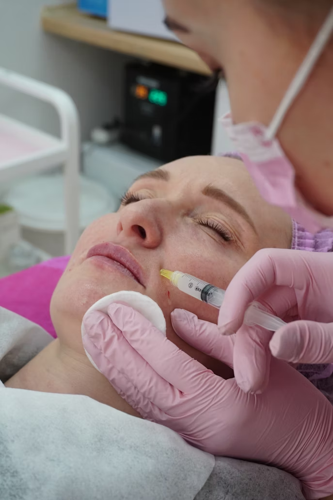Dermal fillers have grown in popularity over recent years as a cosmetic treatment that offers quick results with minimal downtime. They can add volume, smooth lines, and restore a youthful appearance. For those exploring this option, understanding what to expect before treatment is crucial. The procedure involves injecting substances beneath the skin to improve facial contours or soften wrinkles. While results can be transformative, being informed helps patients make confident decisions and avoid unpleasant surprises. This article explores six important aspects everyone should know before receiving dermal fillers.

How Dermal Fillers Work to Improve Appearance
Dermal fillers are injectable treatments designed to add volume, smooth out creases, and rejuvenate the skin. They are often composed of hyaluronic acid, calcium hydroxylapatite, or other substances that integrate with the body. The process is minimally invasive, and results can be seen immediately after treatment. One common goal of filler treatments is to address visible aging effects such as fine lines and sagging skin. Also, dermal fillers reduce wrinkles by replenishing lost volume under the skin while lifting and supporting facial features. This helps restore a more youthful look without the need for surgery.
The science behind fillers lies in their ability to replace natural substances that decline with age. For example, hyaluronic acid naturally attracts and holds water, giving skin a plump and hydrated appearance. When injected, fillers fill in the spaces that cause wrinkles or folds, making skin look smoother and firmer. Results vary depending on the product, injection technique, and individual factors such as skin type.
Choosing the Right Type of Dermal Filler
There are many types of dermal fillers available, each designed to address specific concerns. Some fillers are best for deep wrinkles, while others work well for subtle lines or adding volume to lips and cheeks. Hyaluronic acid fillers are among the most popular because they are safe, reversible, and offer natural results. Calcium hydroxylapatite fillers are thicker and longer-lasting, making them ideal for deeper lines and structural support. Poly-L-lactic acid fillers stimulate collagen production, offering gradual improvements over time.
Choosing the right filler requires an understanding of both the product and the desired outcome. Consulting a qualified practitioner is essential, as they can recommend the best option based on facial structure, skin condition, and personal goals. This choice can affect how long results last, the level of discomfort during treatment, and whether touch-ups will be necessary.
Understanding the Risks and Side Effects
Like any medical or cosmetic procedure, dermal fillers carry certain risks. Most people experience only minor side effects, but it is important to understand what might occur before undergoing treatment. Common temporary effects include redness, swelling, bruising, tenderness, or slight discomfort at the injection site. These symptoms typically fade within a few days, though in some cases swelling or bruising can persist for up to two weeks.
More serious complications, while uncommon, can happen. These include infection, allergic reactions to the filler material, or the formation of small lumps under the skin. Uneven results or asymmetry are possible if the filler is not placed precisely. In rare but severe cases, improper injection technique can cause blood vessel blockage, leading to tissue damage or loss of skin in the treated area. Some patients may experience prolonged swelling or firmness that requires correction.
The likelihood of complications can be reduced significantly by choosing a licensed and experienced practitioner who has a strong track record in facial injections. A thorough consultation beforehand should involve discussing medical history, any allergies, current medications, and previous cosmetic treatments. Patients should also be aware that fillers may interact differently depending on skin type, age, and underlying health conditions, making personalization of the treatment plan essential for both safety and achieving natural results.
What to Expect During and After Treatment

Dermal filler treatments are generally quick, often taking less than an hour. The procedure begins with a consultation to review goals, choose the appropriate filler, and mark the injection points. Some patients receive a topical numbing cream to minimize discomfort. Injections are performed in targeted areas, and patients can usually return to daily activities almost immediately.
After treatment, mild swelling or bruising is common. Results are visible right away, though the final effect becomes clearer after a few days when swelling subsides. Some patients need follow-up appointments to perfect results. Maintaining results requires regular touch-ups, as fillers are absorbed by the body over time. The longevity of results depends on the type of filler used and factors such as metabolism and lifestyle habits.
Cost Considerations and Longevity of Results
Dermal fillers vary widely in cost, depending on factors such as the type of filler, the amount needed, and the practitioner’s expertise. Treatments can range from a few hundred to several thousand dollars. It is important to understand that fillers are not permanent solutions; most last between six months and two years.
The temporary nature of fillers allows patients to adjust their look over time. Some choose to reapply regularly to maintain results, while others use fillers intermittently for specific events or milestones. The price of maintenance should be factored into the decision to undergo treatment. Patients should also consider potential additional costs if complications arise or touch-ups are needed sooner than expected.
Preparing for Dermal Filler Treatment
Preparation plays a big role in achieving optimal results and reducing complications. Patients should avoid alcohol, blood-thinning medications, or supplements that increase bruising risk before treatment. Clear communication with the practitioner about expectations, previous procedures, and medical history is essential.
A consultation is also the time to discuss pain management, recovery timelines, and possible side effects. Some patients opt to take photographs before treatment to compare changes afterward. Having realistic expectations can improve satisfaction with the results and prevent disappointment. Choosing a qualified and experienced injector is the most crucial step, as precision and skill significantly influence outcomes.
Dermal fillers offer a non-surgical option for those seeking to improve facial aesthetics. Understanding how fillers work, selecting the right type, knowing the risks, and preparing for treatment are key to a successful experience. Cost considerations and knowing what to expect during and after the procedure are equally important. When approached with careful planning and professional guidance, dermal fillers can deliver natural-looking results and boost confidence. Being well-informed empowers patients to make choices that align with their personal goals and ensures a safer, more satisfying cosmetic journey.



(0) comments
We welcome your comments
Log In
Post a comment as Guest
Keep it Clean. Please avoid obscene, vulgar, lewd, racist or sexually-oriented language.
PLEASE TURN OFF YOUR CAPS LOCK.
Don't Threaten. Threats of harming another person will not be tolerated.
Be Truthful. Don't knowingly lie about anyone or anything.
Be Nice. No racism, sexism or any sort of -ism that is degrading to another person.
Be Proactive. Use the 'Report' link on each comment to let us know of abusive posts.
Share with Us. We'd love to hear eyewitness accounts, the history behind an article.